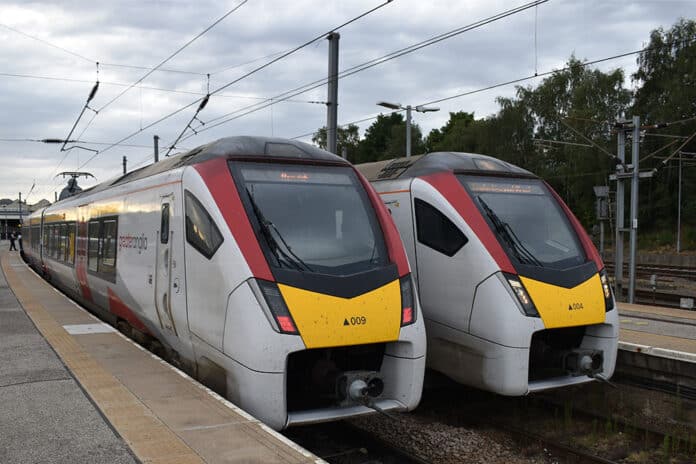Carbon emissions in East Anglia travel in the right direction when people switch from car to train, figures reveal.
To mark Car Free Day on 22 September, Greater Anglia put five of its most popular routes through a carbon calculator to demonstrate the enormous carbon savings that can be made by choosing to travel sustainably.
It reveals that over 8.5 million people travelled on the five routes between 1 January and 31 August 2022 and together saved over 62.7 million kilograms of CO2e from being emitted into the atmosphere. That is equivalent to over 10 million tree seedlings growing for ten years.
The calculated routes were:
- London Liverpool Street to Stansted Airport, where more than 2.8 million people have used the route since January, saving over 23.8 million kg of CO2e from being released into the atmosphere if they had instead travelled by car,
- Chelmsford to London Liverpool Street, where more than 2.2 million people used the route since January, saving over 15 million kg of CO2e from being released into the atmosphere if they had instead travelled by car,
- London Liverpool Street to Shenfield, where more than 1.4 million people used the route since January, saving over 6.5 million kg of CO2e from being released into the atmosphere if they had instead travelled by car,
- Colchester to London Liverpool Street, where more than 1.2 million people used the route since January, saving over 14 million kg of CO2e from being released into the atmosphere if they had instead travelled by car, and
- Cheshunt to London Liverpool Street, where more than 992,000 people used the route since January, saving over 3 million kg of CO2e from being released into the atmosphere if they had instead travelled by car.
The calculator is available at Greater Anglia’s online Green Hub – greateranglia.co.uk/carbon-calculator
According to the Department for Transport (DfT), road transport is the biggest driver of CO2 emissions in the UK.
In 2019, domestic transport was responsible for emitting 122 million tonnes of carbon dioxide equivalent (CO2e). This means transport is the largest emitting sector of greenhouse gas emissions, producing 27 per cent of the UK’s total emissions in 2019.
Of this, the majority – 91 per cent – came from road transport vehicles. Rail, however, accounts for just 1.4 per cent of transport emissions despite representing 10 per cent of all journeys – and the industry has a target to become net zero by 2050.
Greater Anglia environment & energy manager, Stephanie Evans, said: “These figures show just what a difference people can make to their carbon footprint when they choose to travel more sustainably and go car-free.
“Rail is a much greener way to travel that offers a convenient, comfortable alternative to the car and can help reduce congestion and pollution in our towns, villages and tourism hot spots.
“We are constantly working to reduce our emissions, become more energy-efficient and increase biodiversity at our stations – and our new fleet of trains will contribute even more thanks to their more environmentally friendly features which reduce CO2 and particulate emissions in the region further still.”
The carbon calculator reveals that for most journeys, going by car emits four times more CO2e than going by train.
GA highlighted that, for example, a journey from Norwich to London Liverpool Street saves 28.14 kg of CO2e (equivalent to powering a house for 32 hours) whilst a journey from Colchester to Clacton-On-Sea saves 3 kg of CO2e (equivalent to boiling 42 kettles). A journey from Bishop’s Stortford to Tottenham Hale saves 4.84 kg of CO2e (equivalent to powering a house for 7 hours) and a journey from Southend Victoria to London Liverpool Street saves 7.68 kg of CO2e (equivalent to boiling 109 kettles)
GA’s scope 1 and 2 carbon emissions have reduced by 21 per cent over the last two years thanks to a series of energy and carbon reduction measures.







































 0113 2082620
0113 2082620 info@railbusinessdaily.com
info@railbusinessdaily.com 15 Mariner Court, Wakefield WF4 3FL
15 Mariner Court, Wakefield WF4 3FL

